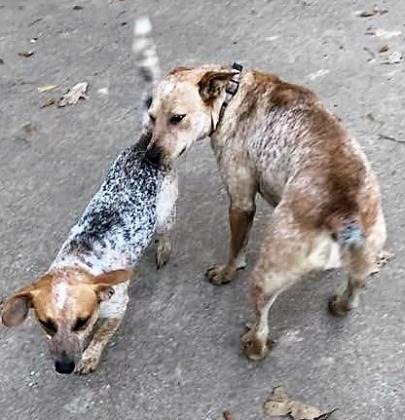Where, oh where has my little dog gone?
If you plan to surprise a loved one with a fourlegged friend under the Christmas tree this year, take steps to ensure you won’t have to wonder where your little dog has gone by investing in a pet microchip.
For decades dog tags were what pet owners relied on if Fido wandered away from home, but today’s microchipping technology provides a permanent method of electronic identification. Microchipping can’t guarantee every lost pet will be returned but the odds increase dramatically when pet owners are proactive in maintaining their pet’s registry information.
Peace of mind for a small price
According to Dewberry Hill Animal Clinic technician Dana Swearingen, microchipping pets is not new – pet owners have been doing it for about 15 years. In her previous experience as an animal control officer and at Dewberry Hill, animals most likely to be chipped are primarily dogs, then cats and even rabbits. Chips provide pet owners with some peace of mind for a relatively small financial investment. The American Kennel Club nonprofit registry, AKC Reunite, says pets that are chipped are “20 times more likely to be reunited with their owners.”
Implanting a microchip is a quick process which consists of inserting the chip, the size of a grain of rice, through a needle under the skin between the animal’s shoulder blades and is considered no more invasive than a vaccination.
Fees vary from clinic to clinic, generally ranging from $15-$40. Swearingen said the higher fee usually includes chip registration as a service provided by the clinic. The lower fee may mean the pet owner is provided the information and assumes responsibility for registering their pet.
According to Swearingen, there are at least 30 registries across the United States, but the pet’s microchip registry depends on the brand. While there is no one single national pet registry, the website www.preventivevet.com notes that some registries are “universal” in that they can register all brands of microchips.
One happy ending
Grimes County resident Teddi Jackson learned the value of microchipping but also some of its challenges when two dogs appeared on her property recently. Friend and owner of Rainbow Boarding in Plantersville, Manuela Hammer, used her scanner to determine the dogs were microchipped. Hammer has rehomed lost dogs as far away as Michigan but was unsuccessful with her usual contacts in finding the registry with which the two dogs were registered.
Jackson’s call to her vet, Beard Navasota Veterinary Hospital, paid off when they were able to refer her to a Conroe animal rescue facility where staff took Jackson’s name and number and notified the pet owner, resulting in a happy reunion.
Responsible pet ownership
For Jackson, the episode revealed the importance of registering the chip and keeping the registry updated with current owner contact information.
She said, “I’d hate to think that somebody spent the money to chip their dogs and then didn’t make sure that they were registered.”
Swearingen said that Dewberry Hill has successfully located about 5 or 6 animals this year but failure to update contact information is one of the biggest obstacles to reuniting lost pets. Registry renewals average $10-$20 per year.
She said, “We don’t have a lot that come out here but unfortunately, a lot don’t have an updated registration, or they don’t have a microchip at all.”
Jackson recalled dismissing reminders to update her own registrations but saw firsthand how unreported changes to address and phone numbers could have impacted her experience.
About unrenewed registrations, Swearingen said, “Once it runs out…it’s kind of moved to the bottom. Finding owners once the registration is not being paid for anymore, it’s gets harder to find them.”
As for the process of microchipping, Swearingen said, “It’s not as scary as it sounds and I think every animal should be chipped, at least every dog so that when they’re out there on the street, they’re able to get back home and not be stuck in a shelter somewhere.”
Where to start with a found animal?
One of the first stumbling blocks to returning someone’s lost pet, is lack of a collar with identification information or dog tags. Swearingen said, “There
Swearingen said, “There is a small tag that will go on their collar which has the microchip company and the actual microchip number on it but a lot of times with dogs, it’s hard to keep the collars on, or the tag on.”
Scanning to determine if an animal is microchipped is not an invasive procedure and can be done by a vet or an animal shelter. In some cases, local animal control may come out and scan. While there seems to be an app for everything these days, at present there is no single app to download to Android or iOS devices to detect or scan a microchip.
Running the scanner along the animal’s back will display the microchip company and/ or the microchip number.
AKC Reunite advises that once a microchip is detected, go to www.petmicrochiplookup.org, a free online resource for a list of registries to contact.
As for how lost pet stories end, speaking from experience, Swearingen said, “It happens all the time, unfortunately, the owners’ names are changed, their address is changed, and no phone numbers are to be found. So, all you do is sit and wait and hope somebody comes in. When nobody shows up, the animals are placed for adoption.”

